| |||||||
| Search Forums |
| Advanced Search |
| Go to Page... |
 |
| Search this Thread |  137,373 views |
| | #151 |
| Distinguished - BHPian  | Re: Rendezvous with The Universe | My Astrophotography Hobby Admittedly not a great image. But this is me, at night, from our garden, taking an image of the moon and Jupiter just to the right of the moon! 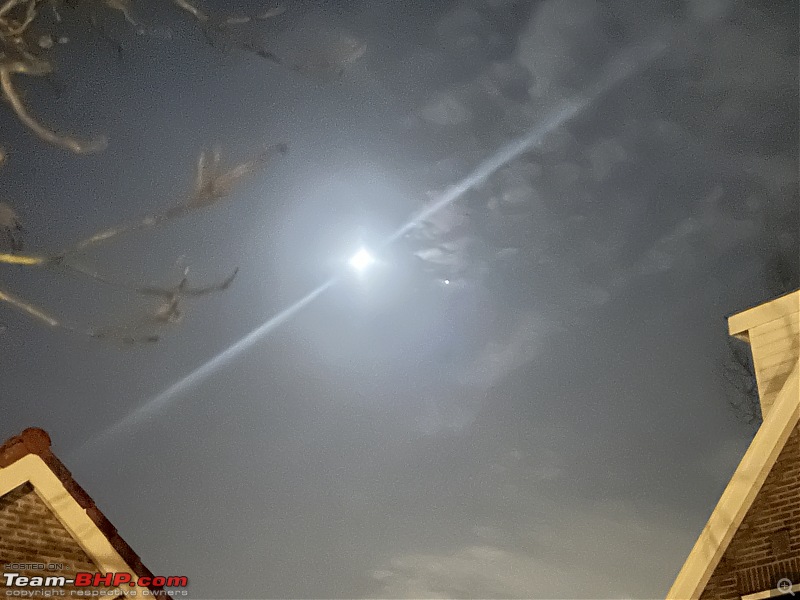 Jeroen |
| |  (3)
Thanks (3)
Thanks
 |
| The following 3 BHPians Thank Jeroen for this useful post: | am1m, graaja, SnS_12 |
| |
| | #152 | ||
| Distinguished - BHPian  Join Date: May 2010 Location: Bangalore
Posts: 2,010
Thanked: 13,458 Times
| Re: Rendezvous with The Universe | My Astrophotography Hobby Quote:
Quote:
https://economictimes.indiatimes.com...2.cms?from=mdr https://www.bbc.com/news/science-environment-64082159 | ||
| |  (1)
Thanks (1)
Thanks
 |
| The following BHPian Thanks am1m for this useful post: | graaja |
| | #153 |
| Team-BHP Support  Join Date: Nov 2013 Location: Coimbatore
Posts: 3,483
Thanked: 23,572 Times
| Re: Rendezvous with The Universe | My Astrophotography Hobby Coorg Star Party - 24th to 27th December 2022 Every year, Bangalore Astronomical Society (BAS) organizes star parties in the winter months during the weekend close to new moon. This year, the first event happened from 24th to 27th December. I attended this event with my daughters. I have written a detailed report on this trip in the below thread. https://www.team-bhp.com/forum/shift...ery-coorg.html (Coorg Star Party - An Astrophotography / Visual Observation Trip to Talacauvery, Coorg) For the record in this thread, posting the pictures acquired during this trip. Note: Click on the pictures to open the full resolution images. Equipment and Software: Equipment: Skywatcher EQ6-R Pro Germal Equatorial Mount William Optics GT81 Apochromatic Triplet Refractor Telescope Willam Optics 50mm Guide Scope ZWO ASI 2600 MC Pro camera ZWO ASI 224 guide camera ZWO EAF (Electronic Auto Focuser) Intel NUC PC with i7 for controlling the equipment Software: N.I.N.A for controlling the equipment, plate solving and image acquisition PixInsight for stacking the images and post processing Lightroom for final processing M31 - The Andromeda Galaxy The Andromeda Galaxy, also known as Messier 31, M31, or NGC 224 and originally the Andromeda Nebula, is a barred spiral galaxy with the radius of about 110,000 light years approximately 2.5 million light-years from Earth and the nearest large galaxy to the Milky Way. Its age is estimated at about 10 billion years. It is the largest galaxy in the local group (a group of galaxies including Milky Way) which includes also the Milky Way, Triangulum and 30 other small galaxies. The Andromeda galaxy is approaching our Milky Way galaxy at a speed of about 110 km/second and will merge with Milky Way in about 4 billion years. Image Acquisition Details: Total integration time: 1 hour 40 minutes Lights: 20 x 300 seconds Darks: 25 Flats: 25 Location: Talacauvery, Coorg, Karnataka, India Date: 24th December 2022 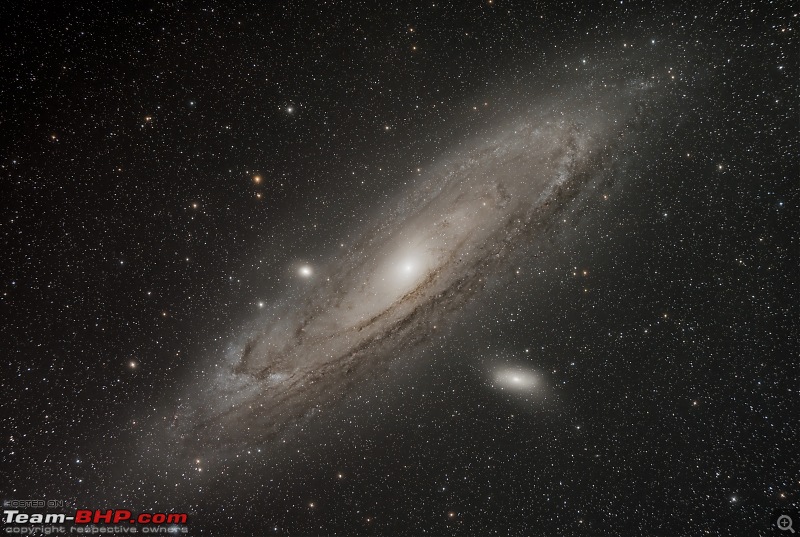 M81 - Bode Galaxy and M82 - Cigar Galaxy Bode's Galaxy (the big disc on the right): This galaxy is 11.74 million light years away from earth and 45,000 light years in radius. Cigar Galaxy (the thin one resembling a cigar on the left): This galaxy is about 11.4 million light years away from earth and is about 18,500 light years in radius. Image Acquisition Details: Total integration time: 3 hours 10 minutes Lights: 38 x 300 seconds Darks: 25 Flats: 25 Location: Talacauvery, Coorg, Karnataka, India Date: 24th December 2022  IC 405 and IC 410 - The Flaming Star and Tadpoles Nebula IC410, the Tadpoles Nebula (Top left part of the image) is a dusty emission nebula situated in the constellation Auriga at about 12,000 light years from earth. The gas structures are lit by the radiation from the open star cluster NGC1893 that lies in the center of the nebula. This star cluster is about 4 million years old, but in astronomical terms it is still very young, with hot, massive stars. IC 405, the Flaming Star Nebula is an emission and reflection nebula in the constellation Auriga north of the celestial equator, surrounding the bluish, irregular variable star AE Aurigae. It shines at magnitude +6.0. It lies at a distance of 1500 light years from earth. Image Acquisition Details: Total integration time: 2 hours 5 minutes Lights: 25 x 300 seconds Darks: 25 Flats: 25 Location: Talacauvery, Coorg, Karnataka, India Date: 25th December 2022  When processing pictures of nebulae with very dense star field, it is very difficult to process the details in the structure of the nebulae. For this, we separate the nebulosity and star fields and process them individually and then recombine. Below is the picture of such starless image of the nebula. Notice the intricate details of the dust and gas clouds in the nebulae. In the top left nebula in the image, you can see a couple of small structures resembling tadpoles. This nebula is called tadpole nebula due to these structures. It is also possible to identify the elements that emit the light from these pictures. Blue represents Oxygen, and red represents Hydrogen. Look at the bluish structure in the bottom right nebula, the flaming star nebula. This area is predominantly filled with Oxygen. 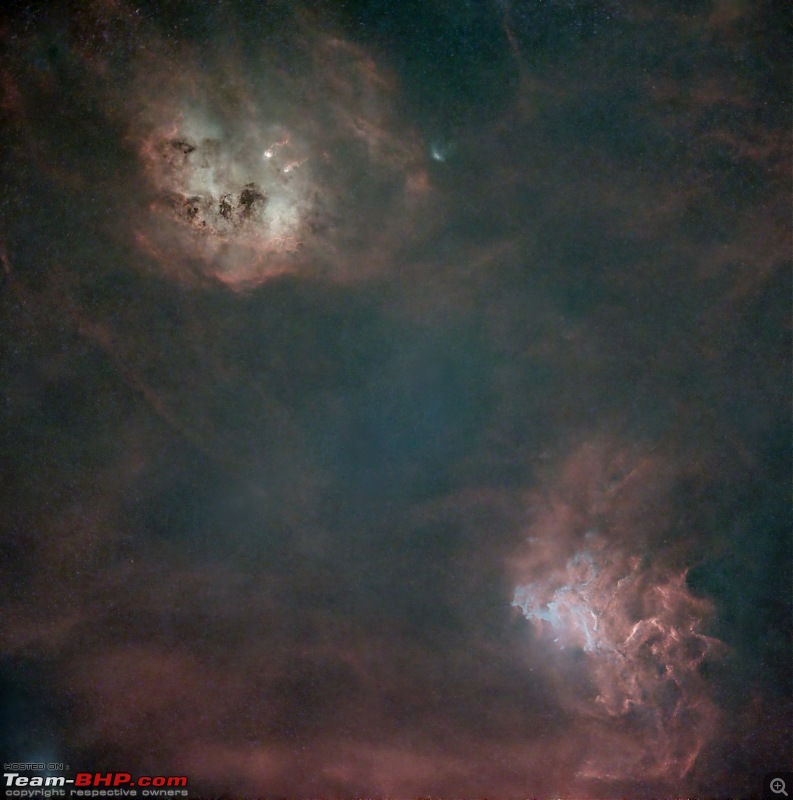 NGC2264 - Cone Nebula and Christmas Tree Cluster NGC2264 designates both the Cone Nebula and the Christmas Tree cluster and lies in the constellation Monoceros. The cone nebula (at the top of the image) resembles a cone and resides in a star forming region. It is a monstrous pillar of cold gas common in large regions of star birth. The cone nebula is 7 light years long and resides at 2500 light years from earth. The Christmas Tree cluster is a large, bright cluster made of about 80 stars of 8th magnitude. The cluster spans 20 light years and lies about 2600 light years from earth. The cluster gets its name due to the resemblance to a christmas tree. Image Acquisition Details: Total integration time: 1 hour 50 minutes Lights: 22 x 300 seconds Darks: 25 Flats: 25 Location: Talacauvery, Coorg, Karnataka, India Date: 26th December 2022  NGC2174 - Monkey Head Nebula NGC2174 named the Monkey Head Nebula is a star forming H-II emission nebula located in the constellation Orion. It is about 6400 light years away from earth. It is an area where new stars are being born at a fierce rate. The stellar winds formed by these stars blows the gas and dust away giving the ape like structure to the nebula. Image Acquisition Details: Total integration time: 2 hours 5 minutes Lights: 25 x 300 seconds Darks: 25 Flats: 25 Location: Talacauvery, Coorg, Karnataka, India Date: 26th December 2022  |
| |  (70)
Thanks (70)
Thanks
 |
| The following 70 BHPians Thank graaja for this useful post: | 5hank3r, aayushnair, Abhi_82, Acharya, adi.mariner, Agarwaka, ags82, Akilan902, am1m, ampere, amvj, BoneCollector, chaitanyakrish, charanreddy, Chetan_Rao, Dr.AD, GeneralJazz, GipsyDanger, GTO, g_sanjib, harsha_8re, InControl, JayG, KarthikK, keroo1099, KrisTvpm, KSP, lapis_lazuli, lxskllr, m.arshad16@gmai, manpreetsj, mxx, Naetik30, Nalin Kumar, nebuchadnezzar, NiInJa, nikhilarni, Nilesh5417, nishsingh, NJ_9, Old_Salt, PearlJam, RaiVW, RavenAvi, Revvatron, ritesh_44, RoadAtlas, sagpatel, Scarlet_Rider, ShortShifter, snaseer, SnS_12, Strider24, Sudarshan42, sukhbirST, sunilsreenivasg, supertinu, Tgo, thallipolivandi, theqca, Turbanator, UD17, unknownartist01, UP!!!!, V.Narayan, veerubhai, vshankarhere, vvbkumar, xja1, xsrahul |
| | #154 |
| BHPian Join Date: Jun 2021 Location: DNCR
Posts: 361
Thanked: 967 Times
| Re: Rendezvous with The Universe | My Astrophotography Hobby I tried taking astro pictures recently while I was in Da Nang, Vietnam. The night sky seemed clear enough to entice me to give it a try. I was damn happy with the results! Device used - S22 Ultra App - Samsung Expert Raw Exposure - 4 minutes No tripod, placed it on a chair. What impressed me was how beautifully a mobile phone can capture night sky! Next time will carry tripod as well! |
| |  (6)
Thanks (6)
Thanks
 |
| The following 6 BHPians Thank manpreetsj for this useful post: | Dr.AD, graaja, KING DYSP, Scarlet_Rider, SnS_12, UD17 |
| | #155 |
| Team-BHP Support  Join Date: Nov 2013 Location: Coimbatore
Posts: 3,483
Thanked: 23,572 Times
| Coorg Star Party - 20th to 23rd January 2023 Coorg Star Party - 20th to 23rd January 2023 Bangalore Astronomical Society (BAS) conducted the second star party of this season in Talacauvery, Coorg from 20th to 23rd January 2023. I participated in this event and stayed all the 4 nights and did both astrophotography and visual observation. This time, I had taken my 8" Ritchey Cretien telescope with a native focal length of 1600mm. With a 0.78x focal reducer, the effective focal length is about 1250mm. With this long focal length, it is possible to shoot smaller and farther objects like galaxies. So, the theme of this trip was "Galaxy Hunting"! A few pictures from the event. Introduction session.  Astrophotography area.  The team. 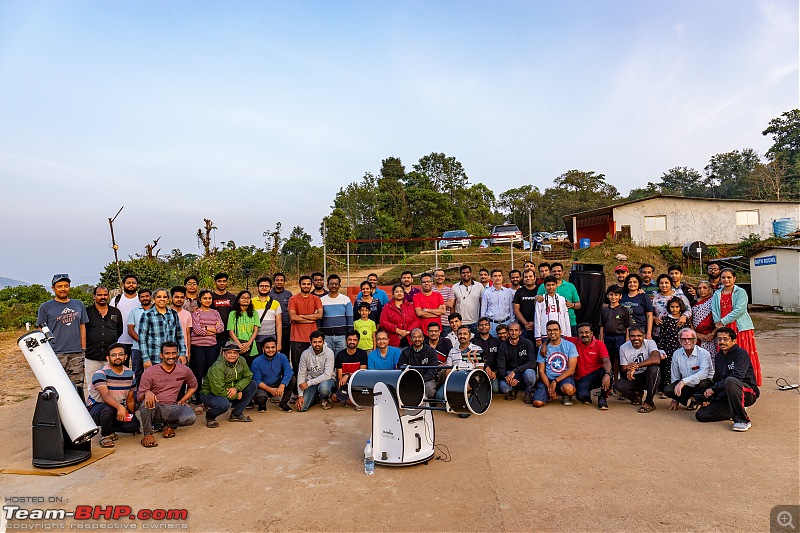 I will write in detail about the event in the "Coorg Star Party" thread. Updating this thread with the pictures of the objects, description and exposure details of each object. Equipment and Software Details Equipment:
Software:
Below picture shows the equipment used to shoot the objects.  |
| |  (10)
Thanks (10)
Thanks
 |
| The following 10 BHPians Thank graaja for this useful post: | 5hank3r, carthick1000, Chetan_Rao, Dr.AD, KarthikK, lapis_lazuli, NTO, Scarlet_Rider, SnS_12, ysjoy |
| | #156 |
| Team-BHP Support  Join Date: Nov 2013 Location: Coimbatore
Posts: 3,483
Thanked: 23,572 Times
| Re: Coorg Star Party - An Astrophotography / Visual Observation Trip to Talacauvery, Coorg Note: Click on individual pictures to open the full resolution image M1 - The Crab Nebula  The Crab Nebula is a supernova remnant in the constellation Taurus. At the center of the nebula lies the Crab Pulsar, a neutron star 28–30 kilometres across with a spin rate of 30.2 times per second, which emits pulses of radiation from gamma rays to radio waves. The nebula lies about 6500 lightyears from earth, has a radius of about 5.5 light years, and is expanding at a rate of about 1500 kilometers per second. The Crab Nebula was the first astronomical object recognized as being connected to a supernova explosion. In the early twentieth century, the analysis of early photographs of the nebula taken several years apart revealed that it was expanding. Tracing the expansion back revealed that the nebula must have become visible on Earth about 900 years before. Historical records revealed that a new star bright enough to be seen in the daytime had been recorded in the same part of the sky by Chinese astronomers on 4 July 1054, and probably also by Japanese observers. In visible light, the Crab Nebula consists of a broadly oval-shaped mass of filaments. The filaments are the remnants of the progenitor star's atmosphere, and consist largely of ionised helium and hydrogen (the prominent red color of the filaments), along with carbon, oxygen, nitrogen, iron, neon and sulfur. The filaments' temperatures are typically between 11,000 and 18,000 degrees, and their densities are about 1,300 particles per cm3. Date: 23rd January 2023, 10:15PM Exposure Details: Total integration of 3:30 hours Lights - 42 x 300 seconds Darks – 25 Flats - 25 NGC 1532 and NGC 1531 - Haley's Coronet Galaxy 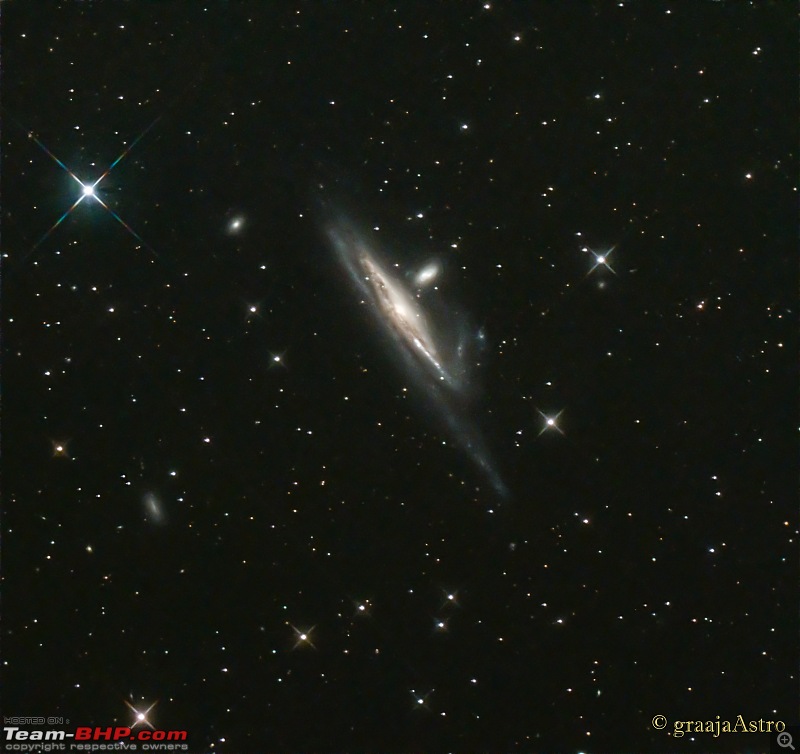 NGC 1531 and NGC 1532 are a pair of interacting galaxies located 70 million light years from earth. NGC 1532, the deformed foreground spiral galaxy laced with dust lanes is so close to its companion — NGC 1531, the background galaxy with a bright core just above the centre of NGC 1532 — that it gets distorted. One of its spiral arms is warped and plumes of dust and gas are visible above its disc. The rectangle marked in picture below shows this distorted spiral arm. 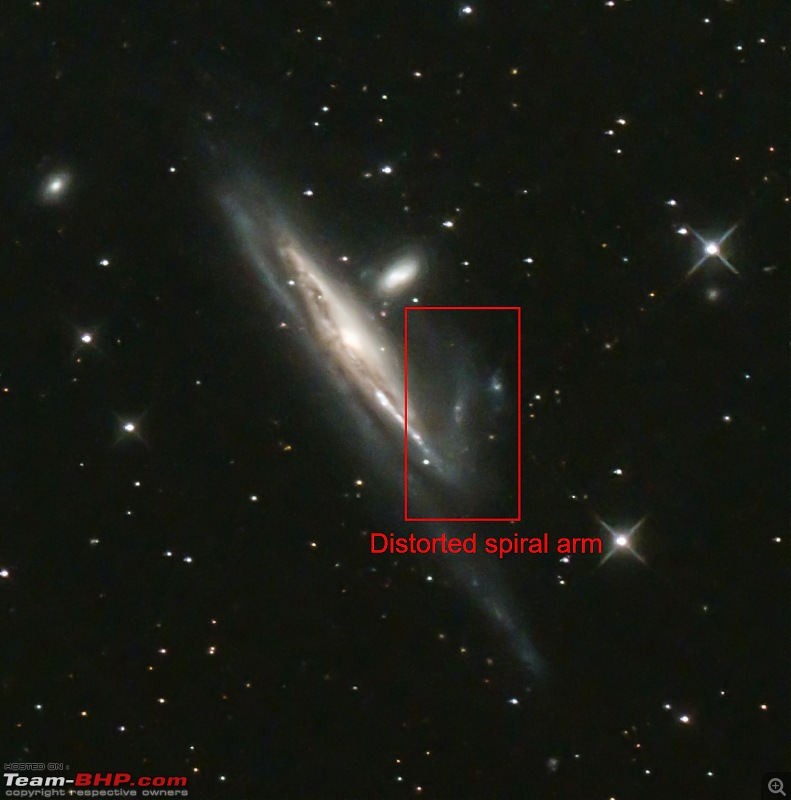 Date: 22nd January 2023, 9:20PM Exposure Details: Total integration of 2:00 hours Lights - 24 x 300 seconds Darks - 25 Flats – 25 M63 - Sunflower Galaxy 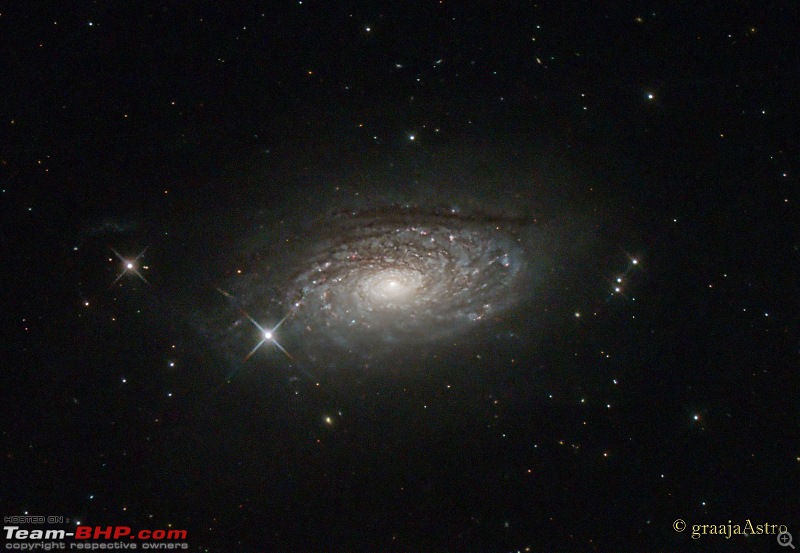 M63 also known as Sunflower Galaxy is a spiral galaxy in the northern constellation of Canes Venatici. It is located 27 million light years from earth. It has a radius of 49000 light years and is estimated to have 400 billion stars. Unlike grand-design spiral galaxies, flocculent spiral galaxies do not have well defined spiral arms. Instead, they appear to have many discontinuous arms. M63, is one such flocculent spiral galaxy. Although it only has two arms, many appear to be winding around its yellow core. The arms shine with the radiation from recently formed blue stars and can be more clearly seen in infrared observations. By imaging flocculent spiral galaxies like M63, astronomers hope to gain a better understanding of how stars form in such systems. Date: 24th January 2023, 2:00AM Exposure Details: Total integration of 2:30 hours Lights - 30 x 300 seconds Darks - 25 Flats - 25 NGC 4631 and NGC 4656 - Whale and Hockey Stick Galaxies  NGC 4631 and NGC 4656 in Coma Berenices were discovered by William Herschel in 1787. NGC 4631, The Whale at top right, is an Sc-type galaxy and one of the largest edge-ons known to us. Its highly irregular shape is due to distortion caused by its companion, the elliptical dwarf NGC 4627 The Pup, riding atop its 'momma's' back. The two are interrelated as evidenced by a bridge of hydrogen gas between them. NGC4631 contains a center starburst which is a region of intense star formation. The strong star formation is evident from the strong emission of hydrogen. This galaxy is situated 30 million light years from earth. To the bottom left is NGC 4656-4657, two interacting galaxies known collectively as the Crowbar or Hockey Stick. The irregular shape is considered to be due to the interaction between the two galaxies. Date: 23rd January 2023, 12:30 AM Exposure Details: Total integration of 3 hours 25 minutes Lights - 37 x 300 seconds Darks - 25 Flats – 25 |
| |  (14)
Thanks (14)
Thanks
 |
| The following 14 BHPians Thank graaja for this useful post: | 5hank3r, Chetan_Rao, Dr.AD, GipsyDanger, gypsygenes, KarthikK, man_and_machine, matrix1984, NTO, Scarlet_Rider, SnS_12, t3rm1n80r, vredesbyrd, xja1 |
| | #157 |
| Team-BHP Support  Join Date: Nov 2013 Location: Coimbatore
Posts: 3,483
Thanked: 23,572 Times
| Re: Coorg Star Party - An Astrophotography / Visual Observation Trip to Talacauvery, Coorg NGC 4565 The Needle Galaxy 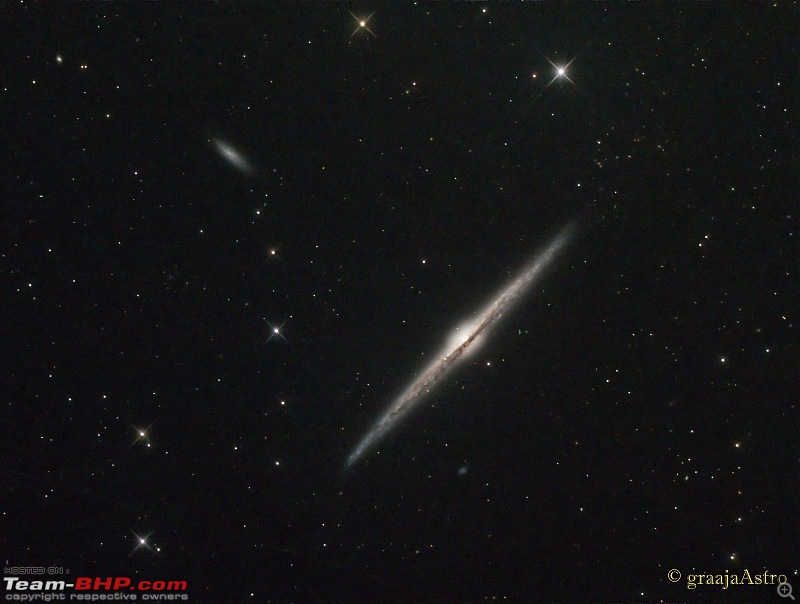 NGC 4565 (also known as the Needle Galaxy or Caldwell 38) is an edge-on spiral galaxy about 30 million light-years away in the constellation Coma Berenices. It displays a bright yellowish central bulge that juts out above the dust lanes. This bright galaxy is one of the most famous examples of an edge-on spiral galaxy, oriented perpendicularly to our line of sight so that we see right into its luminous disc. NGC 4565 has been nicknamed the Needle Galaxy because, when seen in full, it appears as a very narrow streak of light on the sky. Date: 22nd January 2023, 1:00 AM Exposure Details: Total integration of 2 hours 50 minutes Lights - 34 x 300 seconds Darks - 25 Flats 25 NGC 891 The Silver Sliver Galaxy  NGC 891 (also known as Caldwell 23, the Silver Sliver Galaxy, and the Outer Limits Galaxy) is an edge-on unbarred spiral galaxy about 30 million light-years away in the constellation Andromeda. It was discovered by William Herschel on October 6, 1784. The galaxy is a member of the NGC 1023 group of galaxies in the Local Supercluster. It has an H II nucleus. The object is visible in small to moderate size telescopes as a faint elongated smear of light with a dust lane visible in larger apertures. NGC 891 looks as the Milky Way would look like when viewed edge-on (some astronomers have even noted how similar to NGC 891 our galaxy looks as seen from the Southern Hemisphere) and, in fact, both galaxies are considered very similar in terms of luminosity and size; studies of the dynamics of its molecular hydrogen have also proven the likely presence of a central bar. Despite this, recent high-resolution images of its dusty disk show unusual filamentary patterns. These patterns are extending into the halo of the galaxy, away from its galactic disk. Scientists presume that supernova explosions caused this interstellar dust to be thrown out of the galactic disk toward the halo. The galaxy is a member of a small group of galaxies, sometimes called the NGC 1023 Group. Other galaxies in this group are the NGCs 925, 949, 959, 1003, 1023, and 1058, and the UGCs 1807, 1865 (DDO 19), 2014 (DDO 22), 2023 (DDO 25), 2034 (DDO 24), and 2259. Its outskirts are populated by multiple low-surface brightness, coherent, and vast substructures, like giant streams that loop around the parent galaxy up to distances of approximately 50 kpc (163,000 lightyears). The bulge and the disk are surrounded by a flat and thick cocoon-like stellar structure. These have vertical and radial distances of up to 15 (48000 lightyears) kpc and 40 kpc (130,000 lightyears), respectively, and are interpreted as the remnant of a satellite galaxy disrupted and in the process of being absorbed by NGC 891. Date: 21st January 2023, 7:45 PM Exposure Details: Total integration of 3 hours Lights - 36 x 300 seconds Darks - 25 Flats 25 NGC 4038/4039 Antenna Galaxies  The Antennae Galaxies (also known as NGC 4038/NGC 4039 or Caldwell 60/Caldwell 61) are a pair of interacting galaxies in the constellation Corvus. They are currently going through a starburst phase, in which the collision of clouds of gas and dust, with entangled magnetic fields, causes rapid star formation. The Antennae Galaxies are undergoing a galactic collision. Located in the NGC 4038 group with five other galaxies, these two galaxies are known as the Antennae Galaxies because the two long tails of stars, gas and dust ejected from the galaxies as a result of the collision resemble an insect's antennae. About 1.2 billion years ago, the Antennae were two separate galaxies. NGC 4038 was a barred spiral galaxy and NGC 4039 was a spiral galaxy. 900 million years ago, the Antennae began to approach one another, and 600 million years ago, the Antennae passed through each other. 300 million years ago, the Antennae's stars began to be released from both galaxies. Today the two streamers of ejected stars extend far beyond the original galaxies, resulting in the antennae shape. Within 400 million years, the Antennae's nuclei will collide and become a single core with stars, gas, and dust around it. Observations and simulations of colliding galaxies suggest that the Antennae Galaxies will eventually form an elliptical galaxy. Date: 21st January 2023, 1:45 AM Exposure Details: Total integration of 1 hours 35 minutes Lights - 19 x 300 seconds Darks - 25 Flats 25 Abell 1367 Leo Cluster 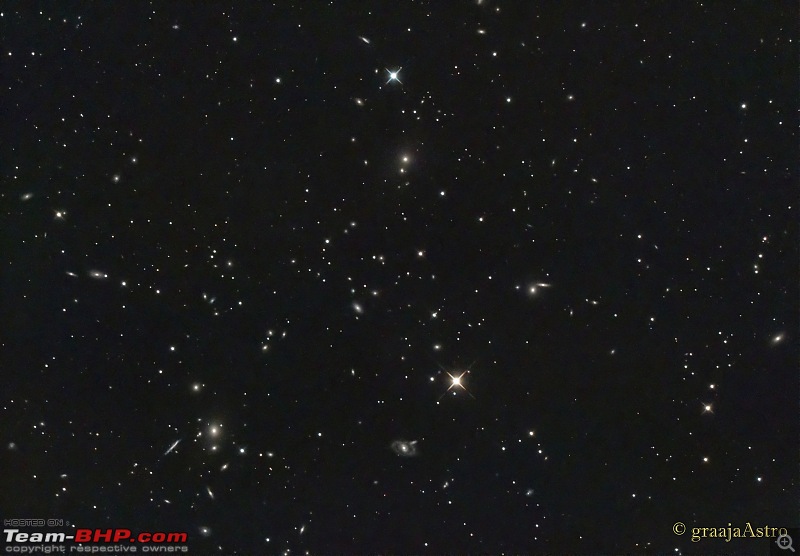 The Leo Cluster (Abell 1367) is a galaxy cluster about 330 million light-years distant in the constellation Leo, with at least 70 major galaxies. The galaxy known as NGC 3842 is the brightest member of this cluster. Along with the Coma Cluster, it is one of the two major clusters comprising the Coma Supercluster, which in turn is part of the CfA2 Great Wall, which is hundreds of millions light years long and is one of the largest known structures in the universe. Most dense galaxy clusters are composed mostly of elliptical galaxies. The Leo Cluster, however, mostly contains spiral galaxies, suggesting that it is much younger than other comparable clusters, such as the Coma Cluster. It is also home to one of the universe's largest known black holes, which lies in the center of NGC 3842. The black hole is 9.7 billion times more massive than the Sun. Picture below shows NGC3842.  Date: 21st January 2023, 1:45 AM Exposure Details: Total integration of 1 hours 35 minutes Lights - 19 x 300 seconds Darks - 25 Flats 25 |
| |  (17)
Thanks (17)
Thanks
 |
| The following 17 BHPians Thank graaja for this useful post: | 2himanshu, Chetan_Rao, Dr.AD, GipsyDanger, gypsygenes, KarthikK, man_and_machine, neelkumar, NTO, PreludeSH, Scarlet_Rider, shancz, ShortShifter, SnS_12, Sran, venkat_partha, vredesbyrd |
| | #158 |
| Team-BHP Support  Join Date: Nov 2013 Location: Coimbatore
Posts: 3,483
Thanked: 23,572 Times
| Re: Coorg Star Party - An Astrophotography / Visual Observation Trip to Talacauvery, Coorg NGC 2467 The Skull and Crossbones Nebula  NGC 2467, nicknamed the "Skull and Crossbones Nebula", is a star-forming region situated at 4420 light years from earth, whose appearance has occasionally also been likened to that of a colorful mandrill. It includes areas where large clouds of hydrogen gas (hence the red color) incubate new stars. The region is dominated by a massive young star, HD 64315 (marked in picture below), of spectral type O6. Two stellar clusters also exist in the area, Haffner 19 (H19) and Haffner 18 (H18). H19 is a compact cluster containing a Strφmgren sphere which is ionized by a hot B0 V-type star. H18 contains a very young star, FM3060a, that has just come into existence and still surrounded by its birth cocoon of gas. The age of H19 is estimated to be 2 Myr, while the age H18 is somewhat controversial, some considering it to be as young as only 1 Myr. Picture below shows HD64315 and the Haffner objects.  Date: 21st January 2023, 7:45 PM Exposure Details: Total integration of 3 hours Lights - 36 x 300 seconds Darks - 25 Flats 25 The Core of Rosette Nebula 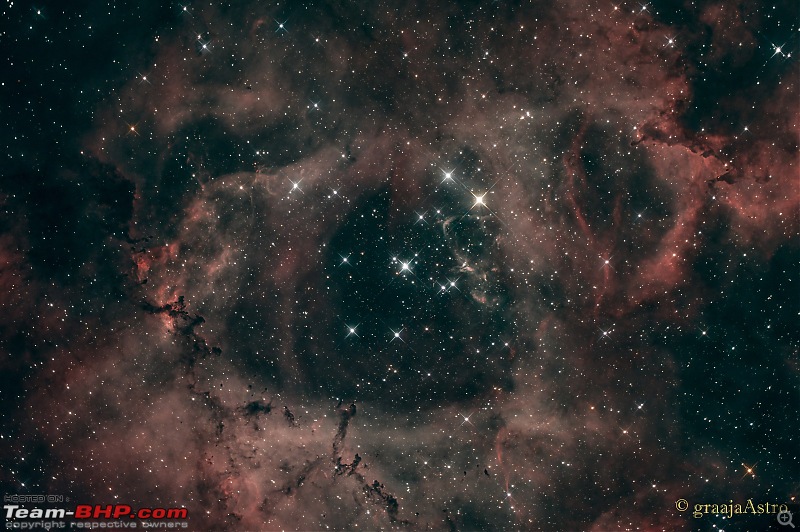 The Rosette Nebula (also known as Caldwell 49) is an H II region located near one end of a giant molecular cloud in the Monoceros region of the Milky Way Galaxy. The open cluster NGC 2244 or Caldwell 50 (the bright stars in the center of the nebula), is closely associated with the nebulosity, the stars of the cluster having been formed from the nebula's matter. The cluster and nebula lie at a distance of 5,000 light-years from Earth and measure roughly 130 light years in diameter. The radiation from the young stars excites the atoms in the nebula, causing them to emit radiation themselves producing the emission nebula we see. The mass of the nebula is estimated to be around 10,000 solar masses. A survey of the nebula with the Chandra X-ray Observatory has revealed the presence of numerous new-born stars inside optical Rosette Nebula and studded within a dense molecular cloud. Altogether, approximately 2500 young stars lie in this star-forming complex, including the massive O-type stars HD 46223 and HD 46150 (the two bright stars on the top right corner of the center), which are primarily responsible for blowing the ionized bubble. Most of the ongoing star-formation activity is occurring in the dense molecular cloud to the south east of the bubble (bottom left in the above picture). Date: 20th January 2023, 9:00 PM Exposure Details: Total integration of 1 hour 20 minutes Lights - 16 x 300 seconds Darks - 25 Flats 25 Comet C/2022_E3  C/2022 E3 (ZTF) is a long period comet from the Oort cloud that was discovered by the Zwicky Transient Facility on 2 March 2022. The comet has a bright green glow around its nucleus which is due to the effect of sunlight on its molecules, especially diatomic carbon and cyanogen. The comet reached its perihelion on 12 January 2023, at a distance of 1.11 AU (166 million km), and the closest approach to Earth will be on 1 February 2023, at a distance of 0.28 AU (42 million km). As the comet is going away from the sun, an anti-tail is forming (the faint structure that extends from the nucleus to the top right corner of the picture). The comet has an orbital period of about 50,000 years, which means when the comet visited our solar system last time, Neanderthals were roaming the earth. Date: 23rd January 2023, 5:00 AM Exposure Details: Total integration of 46 minutes Lights - 23 x 120 seconds Darks - 25 Flats 25 Visual Observation: Apart from astrophotography, I also did about 5:30 hours of visual observation on the 4th night. Observation report below. 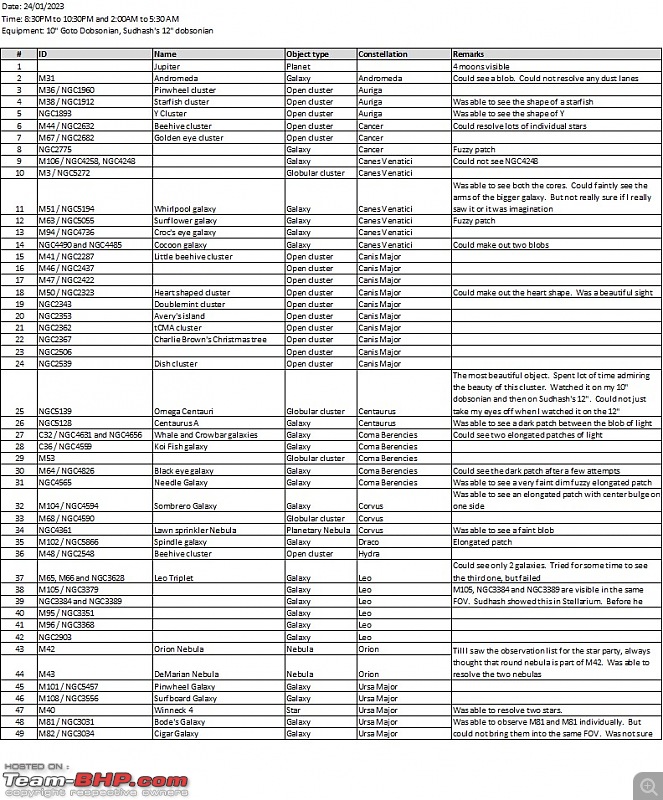 That's all folks, I have on this star party. I have made several equipment upgrades (list below). Will write in detail about these upgrades in upcoming posts.
|
| |  (24)
Thanks (24)
Thanks
 |
| The following 24 BHPians Thank graaja for this useful post: | 5hank3r, BoneCollector, Chetan_Rao, Dr.AD, gypsygenes, KarthikK, keroo1099, kiku007, lapis_lazuli, Nature&Me, neelkumar, NTO, rahulk2510, ROG_AK, Scarlet_Rider, SnS_12, Stryker, sukhbirST, tarmacnaut, TorqMaster, V.Narayan, venkat_partha, vjbox, vredesbyrd |
| | #159 |
| Distinguished - BHPian  Join Date: May 2010 Location: Bangalore
Posts: 2,010
Thanked: 13,458 Times
| Re: Coorg Star Party - An Astrophotography / Visual Observation Trip to Talacauvery, Coorg |
| |  (1)
Thanks (1)
Thanks
 |
| The following BHPian Thanks am1m for this useful post: | graaja |
| | #160 |
| BHPian Join Date: Jun 2005 Location: Bangalore
Posts: 531
Thanked: 3,095 Times
| Re: Rendezvous with The Universe | My Astrophotography Hobby Wow this is some really detailed stuff with absolutely wonderful images. Thanks for sharing and the detailed explanations of each and every image. I'm not sure what you mean by "Total integration time". Does that mean exposure time? Processing time? Both? If exposure time, a second doubt pops up. If each image takes that long, you can't obviously do all this on one camera in one night, so how exactly are these images captured? I have two nephews who regularly attend the Coorg location you have mentioned in this thread. You may have even met them, Gaurav and Rohith Kashyap. |
| |  (1)
Thanks (1)
Thanks
 |
| The following BHPian Thanks Stryker for this useful post: | graaja |
| | #161 | ||
| Team-BHP Support  Join Date: Nov 2013 Location: Coimbatore
Posts: 3,483
Thanked: 23,572 Times
| Re: Rendezvous with The Universe | My Astrophotography Hobby Quote:
Quote:
Total integration time is the total of minutes data is collected. It is broken down into multiple smaller frames. For example: Total integration of 3 hours Lights - 36 x 300 seconds In the above, the total integration is 180 minutes which is made of 36 individual pictures each with an exposure time of 5 minutes (300 seconds). We use software to integrate all these pictures to make the final image. I have explained this process in an earlier post in this thread. https://www.team-bhp.com/forum/shift...ml#post5027318 (Rendezvous with The Universe | My Astrophotography Hobby) Great to know your nephews attend the star parties in Coorg. I may have seen them, but have not been introduced or interacted. Will look out for them when I go to the star party in March. | ||
| |  (2)
Thanks (2)
Thanks
 |
| The following 2 BHPians Thank graaja for this useful post: | SnS_12, venkat_partha |
| |
| | #162 |
| Team-BHP Support  Join Date: Nov 2013 Location: Coimbatore
Posts: 3,483
Thanked: 23,572 Times
| Re: Rendezvous with The Universe | My Astrophotography Hobby It has been quite some time since I have updated this thread. Some of the major updates are: 1. Upgrade to a monochrome camera setup for the main telescope 2. Putting together a secondary portable wide field setup 3. Several pictures taken with the monochrome setup 4. Milky Way photography in Coorg Monochrome Camera Upgrade: I had the ZWO ASI 2600 MC Pro which is a color camera, also known as OSC (one shot color) camera. One of the upgrades that I had been planning was to move to monochrome imaging. Below is a high level explanation of difference between a color camera and monochrome camera. In a color camera there is something called a Bayer color matrix that is placed in front of the sensor. This color matrix has small filters for Red, Green and Blue placed in front of each pixel. These filters pass only the wavelengths corresponding to R, G and B. When reading from the camera, the camera then puts together the RGB information to form a single color image. The advantage of this setup is it is very easy to use. The image that comes out of the camera is a color image which needs less processing. The disadvantage is that the setup is sensitive to light pollution. With a monochrome setup, the camera shoots monochrome images and we have to use filters in front of the camera to capture individual color spectrums and integrate all this during post processing. The advantage with this setup is that by choosing very narrow band filters that pass specific wavelengths corresponding to elements like Oxygen, Hydrogen and Sulphur, we can capture and analyze what type of elements are present in various deep space objects. This technique is used for objects like nebulae that mostly emit light limited to a few elements. On the other hand, objects like galaxies are called broadband targets. These emit light in all wavelengths. For these targets, we can use RGB filters to capture broader spectrums and then integrate the images. With a color camera a pixel is divided into 4 parts and each part is exposed to R, G and B wavelengths. This results in light getting split into 4 smaller parts which results in smaller signal. But in monochrome camera, the light is collected by a single large pixel which is 4 times larger than a color camera. This results in more signal. The disadvantage with a monochrome setup is that it requires more post processing. As we have to collect data for individual color spectrum, this results in more physical files, more storage space, more processing time etc. But the results make it totally worth this. I moved to an off axis guider setup from the separate guide scope/camera setup. This setup has the advantage of the guider being at the same focal length of the main telescope and also due to the guide star being in the same optical path as the main image, there is no error in guiding due to mechanical flexture in the main telescope. Following is the list of equipment needed to complete this new setup. 1. ZWO ASI 2600 MM Pro monochrome camera 2. ZWO OAG-L off axis guider 3. ZWO ASI 174mm monochrome guide camera 4. ZWO 7x36mm electronic filter wheel (used to switch the filters in front of the camera) 5. Antlia LRGB filters 6. Antilia narrow band filters. Ha with 4.5nm passband, Oiii and Sii with 3nm passband A few pictures of putting together the monochrome setup. The components. 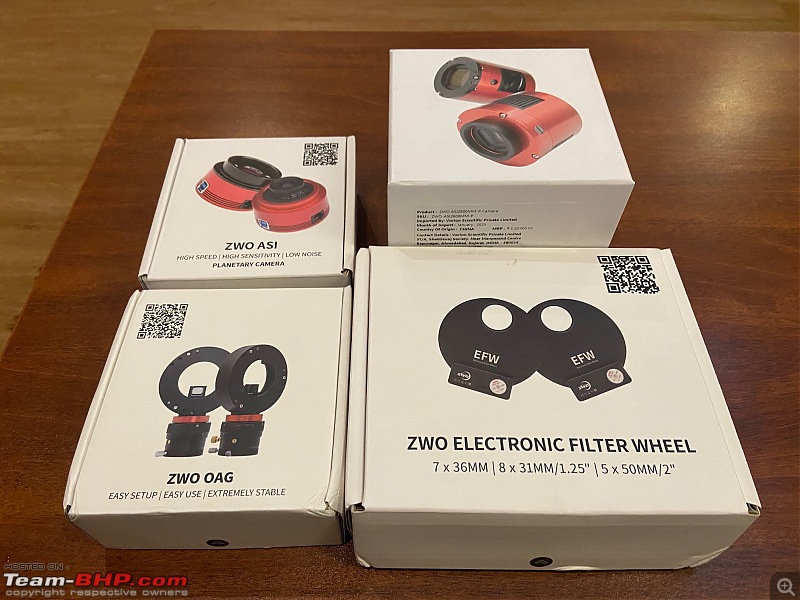 The filter wheel and the filters.  Filter wheel opened. Each circular slot takes a filter.  Installing the filters. Have to be very careful not to touch the surface of the filters. This can leave finger print on the filters which can affect the quality of the pictures. Ideally, the filters have to be installed inside a clean room free from dust. But as I did not have access to a clean room, used a blower to blow off any dust specks after assembly. 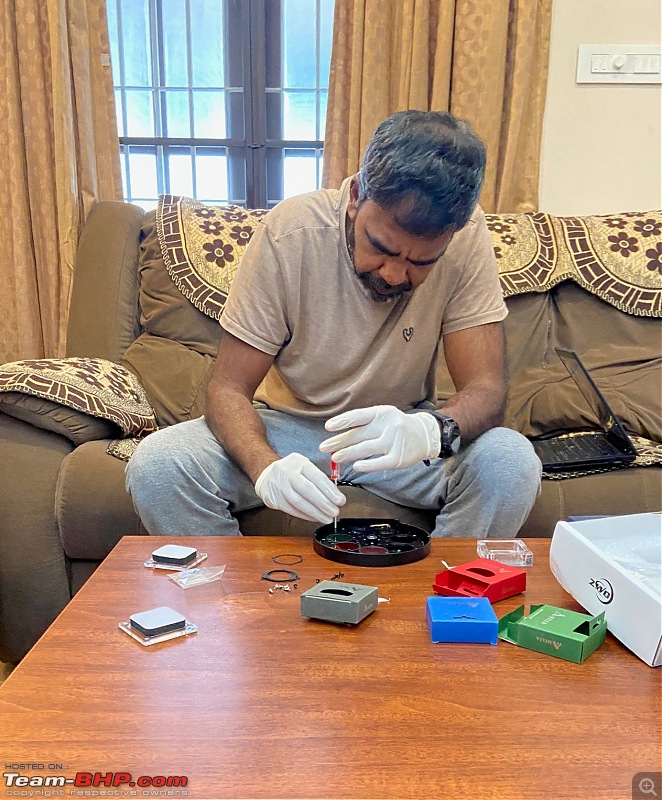 Filters installed. 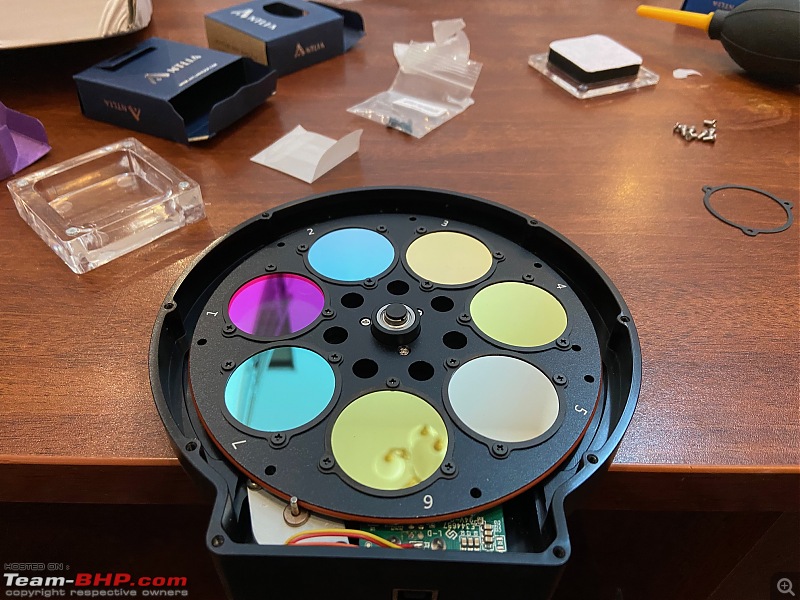 The camera. 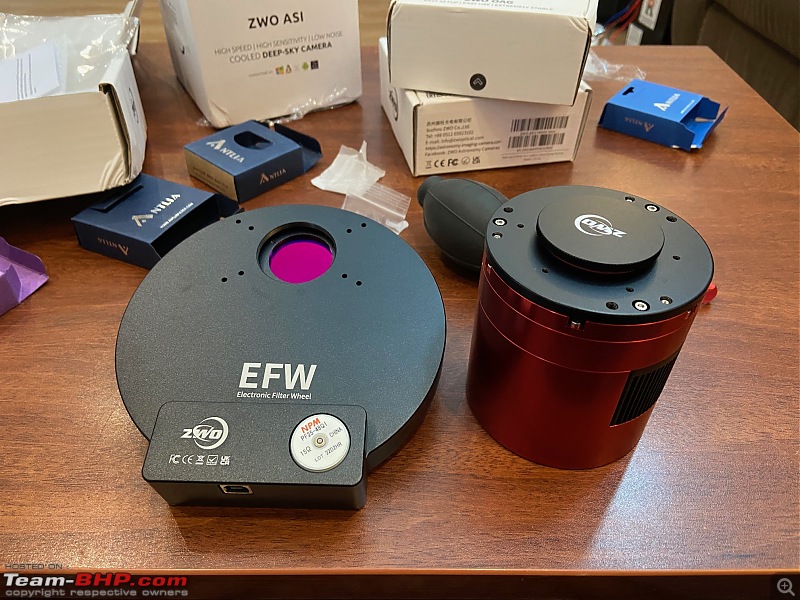 Camera installed on one side and OAG installed on the other side of the filter wheel.  The camera installed. The final assembly with the OAG, guide camera, filterwheel and the main camera.  The new assembly fixed to the telescope and ready to roll. 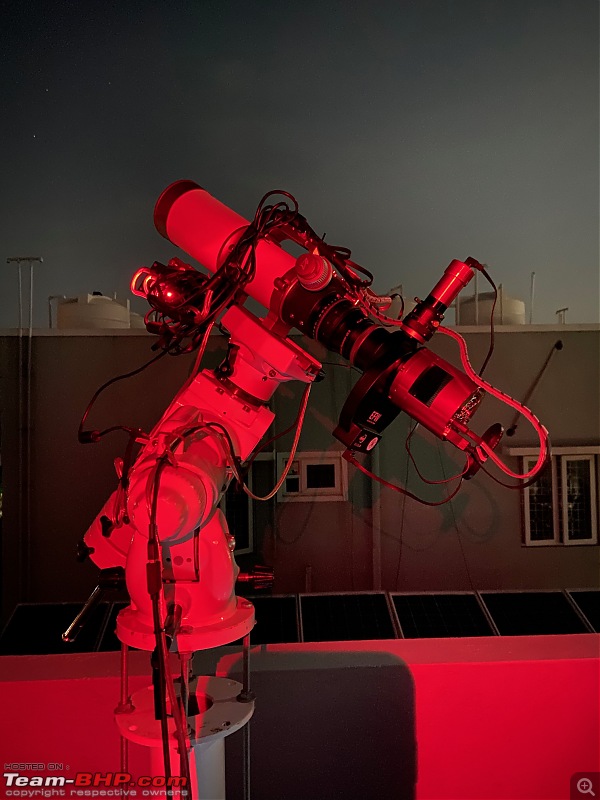 |
| |  (16)
Thanks (16)
Thanks
 |
| The following 16 BHPians Thank graaja for this useful post: | abirnale, akshay81, Avikbrio, Chetan_Rao, Dr.AD, GTO, gunin, KarthikK, kat, PearlJam, robimahanta, sanjayrozario, Scarlet_Rider, SnS_12, vvbkumar, ysjoy |
| | #163 |
| Team-BHP Support  Join Date: Nov 2013 Location: Coimbatore
Posts: 3,483
Thanked: 23,572 Times
| Re: Rendezvous with The Universe | My Astrophotography Hobby Portable Widefield Setup As I upgraded to monochrome camera for the main telescope setup, I decided to put together a portable widefield setup with a simple tracker and a wide field telescope. Following is the list of equipment for this setup. 1. ZWO ASI 2600 MC Pro color camera (from the main setup) 2. William Optics Redcat 51 telescope. This scope has a focal length of 250mm 3. William Optics guide scope 4. ZWO ASI 224 guide camera (from the main setup) 5. iOptron Skyguider Pro star tracker. This is a simple star tracker with a payload of 5 kilos and no automatic Goto functions. It just tracks the stars at earth's rate of rotation. 6. ZWO ASIAIR Mini. This is a mini computer that is used to control the camera and guiding setup and also perform operations like polar alignment, automatic sequence generation etc. The advantage of this setup is that the complete setup weighs less than 10 kilos (compared to 50+ kilos of the main setup) and can be easily carried during travel. Below pictures show this assembled setup.   The setup in action.  The widefield portable setup in action with the main setup.  I did not get many clear nights to put this setup to use. But captured one image of the Orion nebula and horsehead nebula in a single frame. This image is an integration of 3 hours of data - 60 individual frames, with 3 minute exposure each. Note: Click on the picture to open in high resolution.  |
| |  (30)
Thanks (30)
Thanks
 |
| The following 30 BHPians Thank graaja for this useful post: | abirnale, ajay0612, akshay81, ampere, ashpalio, Avikbrio, Batfreak, BoneCollector, catchjyoti, chanz2015, Chetan_Rao, Dr.AD, GTO, KarthikK, kat, keroo1099, Kickdown, mallumowgli, Maverick_4662, MT_Hyderabad, premsky, robimahanta, sanjayrozario, Scarlet_Rider, SnS_12, TejasV, UD17, viggienomad, vvbkumar, ysjoy |
| | #164 |
| Team-BHP Support  Join Date: Nov 2013 Location: Coimbatore
Posts: 3,483
Thanked: 23,572 Times
| Re: Rendezvous with The Universe | My Astrophotography Hobby Monochrome narrowband images captured using the new monochrome setup: I got several clear nights after putting together the monochrome setup and captured several deep space objects from my terrace. Earlier with the monochrome camera, I used to limit any target to a single night. So, the exposure times would be about 3 to 4 hours. But with the monochrome setup, I also started shooting multiple nights on the same target with 8+ hours on single targets. This greatly improved the amount of details that I could capture from these objects. Note: Click on the pictures to open the high resolution image. Before listing the pictures and details, below is the equipment and software setup used for all the images. Equipment: Skywatcher EQ6 R Pro Equatorial mount GSO RC8 with 0.75x Focal Reducer ZWO ASI2600 MM Pro monochrome camera ZWO ASI174 MM Mini guide scope ZWO OAG-L Off axis guider ZWO EAF ZWO 7x36mm filter wheel NUC i7 Mini PC Antlia Pro LRGB filters Antlia Ha 4.5nm, Sii and Oiii 3nm Software: N.I.N.A for image acquisition and equipment control PixInsight for processing Lightroom for final edits The Horsehead and Flame Nebulae (In SHO and HOO palettes) 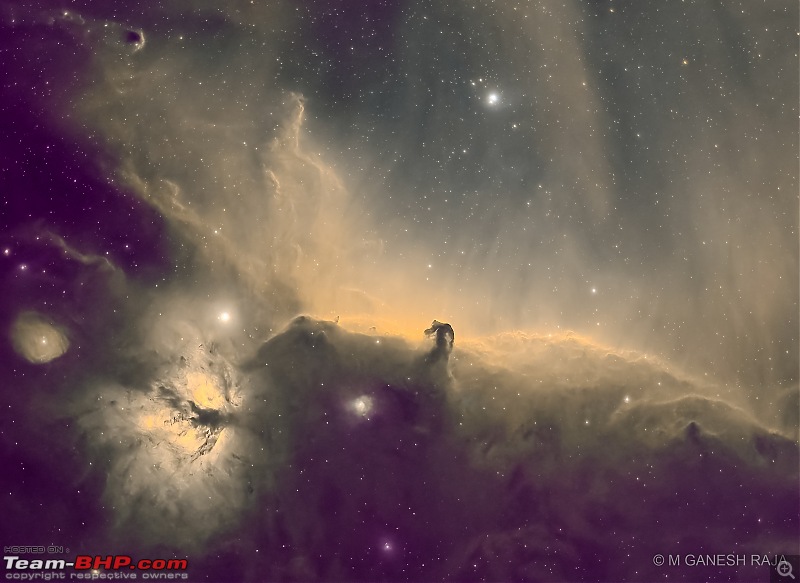 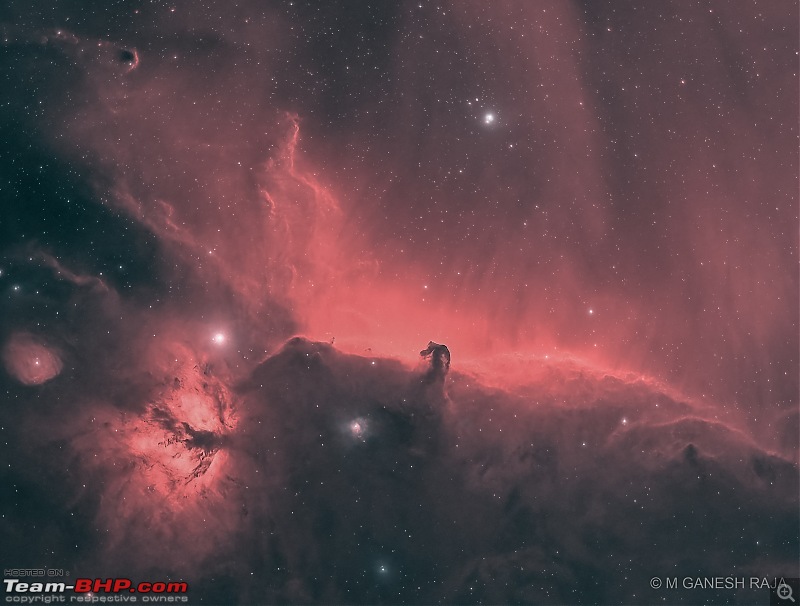 The Horsehead and Flame Nebulae are near the star Alnitak in Orion's belt. The horsehad is visible as the dark indentation to the emission nebula in the center of the image. The horse-head feature is dark because it is an opaque dust cloud that lies in front of the bright emission nebula. Like clouds in Earth's atmosphere, this cosmic cloud has assumed a recognizable shape by chance. After many thousands of years, the internal motions of the cloud will surely alter its appearance. Toward the lower left of the image is the Flame Nebula, which resembles a flame. It also contains intricate filaments of dark dust. Two prominent reflection nebulas are also visible in the picture: the round IC 432 on the far left, and NGC 2023 just to the lower left of the Horsehead nebula. Each glows primarily by reflecting the light of their central star. This image has been shot in narrowband with hydrogen, sulphur and oxygen filters and a monochrome CMOS camera. The first image is SHO palette where the sulphur is assigned to red channel, hydrogen to green and oxygen to blue. The golden hue is due to strong hydrogen and sulphur emissions. The second image is in HOO palette where hydrogen is assigned to the red channel and oxygen to the green and blue channels. The red tone of the image is because of hydrogen being the strongest emission in the region compared to oxygen which is quite weak. Exposure Details: 8 hours 30 minutes Ha - 165 minutes (33 * 300 seconds) Sii - 170 minutes (34 * 300 seconds) Oiii - 175 minutes (35 * 300 seconds) Rosette Nebula in SHO  The Rosette Nebula (also known as Caldwell 49) is an H II region located near one end of a giant molecular cloud in the Monoceros region of the Milky Way Galaxy. The open cluster NGC 2244 or Caldwell 50 (the bright stars in the center of the nebula), is closely associated with the nebulosity, the stars of the cluster having been formed from the nebula's matter. The cluster and nebula lie at a distance of 5,000 light-years from Earth and measure roughly 130 light years in diameter. The radiation from the young stars excites the atoms in the nebula, causing them to emit radiation themselves producing the emission nebula we see. The mass of the nebula is estimated to be around 10,000 solar masses. A survey of the nebula with the Chandra X-ray Observatory has revealed the presence of numerous new-born stars inside optical Rosette Nebula and studded within a dense molecular cloud. Altogether, approximately 2500 young stars lie in this star-forming complex, including the massive O-type stars HD 46223 and HD 46150 (the two bright stars on the top right corner of the center), which are primarily responsible for blowing the ionized bubble. Most of the ongoing star-formation activity is occurring in the dense molecular cloud to the south east of the bubble (bottom right in the picture). This image is in SHO color palette where Sulphur is assigned to Red, Hydrogen to Green and Oxygen to Blue. The golden color represents areas rich in hydrogen and sulphur and blue represents areas rich in oxygen. Date: 24, 25 and 26th February 2023 Location: Vadavalli, Coimbatore, TN, India Exposure Details: Total integration - 11 Hours 55 Minutes Ha - 4 hours 5 minutes (49 * 300 seconds) Sii - 3 hours 50 minutes (46 * 300 seconds) Oiii - 4 hours (48 * 300 seconds) Thor's Helmet Nebula - NGC 2359  NGC 2359 is an emission nebula in the constellation Canis Major. This nebula is called Thor's Helmet nebula, as it resembles the helmet of the Norse God Thor. The nebula is approximately 11,960 light years away and 30 light-years in size. The central star is the Wolf-Rayet star WR7, and is considered to be 280,000 times more bright than our Sun and 16 times more massive. It may well undergo a type of stellar explosion known as a supernova in the near future. The star's interactions with a nearby large molecular cloud are thought to have contributed to the more complex shape and curved bow-shock structure of Thor's Helmet. The nebula has an overall bubble shape, but with complex filamentary structures. The nebula contains several hundred solar masses of ionised material, plus several thousand more of unionised gas. It is largely interstellar material swept up by winds from the central star, although some material does appear to be enriched with the products of fusion and is likely to come directly from the star.[5] The expansion rate of different portions of the nebula varies from 10 km/s to at least 30 km/s, leading to age estimates of 78,500 - 236,000 years. This image is shot in the SHO hubble palette with filters capturing emission lines from Sulphur, Hydrogen and Oxygen elements. Blue in the image indicate areas rich in oxygen. The golden color indicate areas rich in Hydrogen and Sulphur. The reason why this nebula got its name. 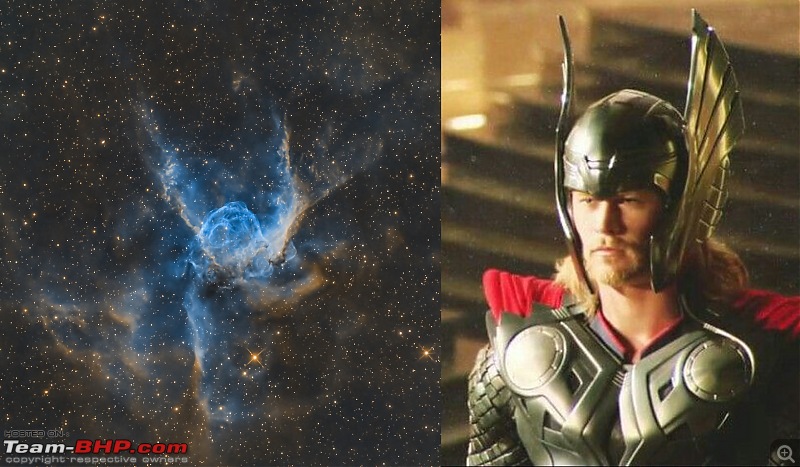 Date: 10th to 14th March 2023 Location: Vadavalli, Coimbatore, TN, India Exposure Details: Total integration - 9 hours Ha - 3 hours 5 minutes (37 * 300 seconds) Sii - 3 hours 25 minutes (41 * 300 seconds) Oiii - 2 hours 30 minutes (30 * 300 seconds) Darks - 25 Flats - 25 for each channel, shot each day Dark flats - 25 each for corresponding flats, shot each day The Seagull Nebula:  The Seagull Nebula, is a region of nebulosity that lies between the edges of the constellations Monoceros and Canis Major. Seagull nebula is a name given by amaterur astronomers to this region due to its appearance and is not an object in any catalog. The region is a collection of objects like dust clouds, star clusters and emission nebulae. Some of the objects in the region are: IC2177 - Bright HII region around the bright star HD53367 NGC2335 - Open cluster NGC2343 - Open cluster NGC2327 - Reflection nebula LDN1657A - Dark cloud Exposure Details: Total Exposure: 8 hours 55 minutes Ha - 39 * 300 seconds Sii - 36 * 300 seconds Oiii - 32 * 300 seconds Flats - 25 each Ha, Sii and Oiii Flat darks - 25 Darks - 25 Markarian Chain  Markarian's Chain is a stretch of galaxies that forms part of the Virgo Cluster. When viewed from Earth, the galaxies lie along a smoothly curved line resembling a chain. Its center an estimated 50 million light-years distant, the Virgo Cluster itself is the nearest galaxy cluster. With up to about 2,000 member galaxies, it has a noticeable gravitational influence on our own Local Group of Galaxies Charles Messier first discovered two of the galaxies, M84 and M86, in 1781. The other galaxies seen in the chain were discovered by William Herschel and are now known primarily by their catalog numbers in the NGC catalog. It was ultimately named after the Soviet astrophysicist, Benjamin Markarian, who discovered their common motion in the early 1960s. Member galaxies include M84 (NGC 4374), M86 (NGC 4406), NGC 4477, NGC 4473, NGC 4461, NGC 4458, NGC 4438 and NGC 4435. The bright members of the chain are visible through small telescopes. Larger telescopes can be used to view the fainter galaxies. Near the center there appear the pair of interacting galaxies NGC 4438 and NGC 4435, about 50 million light-years away, known to some as Markarian's Eyes. At least seven galaxies in the chain appear to move coherently, although others appear to be superposed by chance. Date: 19th, 21st and 22nd February 2023 Location: Vadavalli, Coimbatore, TN, India Exposure Details: Total integration time - 15 Hours L - 560 minutes (112 * 300 seconds) R - 105 minutes (21 * 300 seconds) G - 115 minutes (23 * 300 seconds) B - 120 minutes (24 * 300 seconds) Omega Centauri  Omega Centauri (ω Cen, NGC 5139, or Caldwell 80) is a globular cluster in the constellation of Centaurus that was first identified as a non-stellar object by Edmond Halley in 1677. Located at a distance of 17,090 light-years (5,240 parsecs), it is the largest-known globular cluster in the Milky Way at a diameter of roughly 150 light-years. Orbiting through the Milky Way, Omega Centauri contains several million Population II stars and is about 12 billion years old. The stars in the core of Omega Centauri are so crowded that they are estimated to average only 0.1 light-year away from each other. Compare to this, the nearest star to our Sun, the Proxima Centauri is at a distance of 4.2 light years. It is estimated to contain approximately 10 million stars, and a total mass equivalent to 4 million solar masses, making it the most massive-known globular cluster in the Milky Way. Omega Centauri is very different from most other galactic globular clusters to the extent that it is thought to have originated as the core remnant of a disrupted dwarf galaxy. Date: 26th February 2023 Location: Vadavalli, Coimbatore, TN, India Exposure Details: Total integration - 3 hours 39 minutes L - 30 * 180 seconds R - 15 * 180 seconds G - 14 * 180 seconds B - 14 * 180 seconds |
| |  (32)
Thanks (32)
Thanks
 |
| The following 32 BHPians Thank graaja for this useful post: | abirnale, ajay0612, ampere, ashpalio, Avikbrio, ayankm, Batfreak, BoneCollector, chanz2015, Chetan_Rao, Dr.AD, GTO, IcarusMan, KarthikK, kat, Kickdown, maddyg, mallumowgli, mugen_pinaki27, NewUser123, premsky, robimahanta, sanjayrozario, Scarlet_Rider, SnS_12, sridhar-v, TejasV, TheReebee, UD17, virajmore03, vvbkumar, ysjoy |
| | #165 |
| Team-BHP Support  Join Date: Nov 2013 Location: Coimbatore
Posts: 3,483
Thanked: 23,572 Times
| Astrophotography trip to Coorg and Milkyway pictures Did an astrophotography trip to Coorg on April 20 and 21. This is most probably the last trip for this season as summer showers have started and this will be followed by monsoon. The next astrophotography season will start in December 2023. I may also do a trip to Hanle in October. Went to the same location where BAS conducts the star parties. As this is almost end of season and very high probability of clouds, BAS did not conduct their official star party in April. Instead just 3 astrophotographers decided to take a chance. We had the whole place that usually has 50 to 70 participants during star parties. The first half of the first night was washed out due to clouds. We even had a small burst of rain and had to keep the equipment covered. But the 2nd half of the night on the first day and the whole of the 2nd day, we got crystal clear skies. This turned out to be the best of this season. I also got a chance to photograph the Milky way and capture a few timelapse videos of the Milkyway moving across the sky. I got lucky and caught a very big meteor in one of the frames of the timelapse. A few pictures from this trip. Equipment packed and loaded in the car.  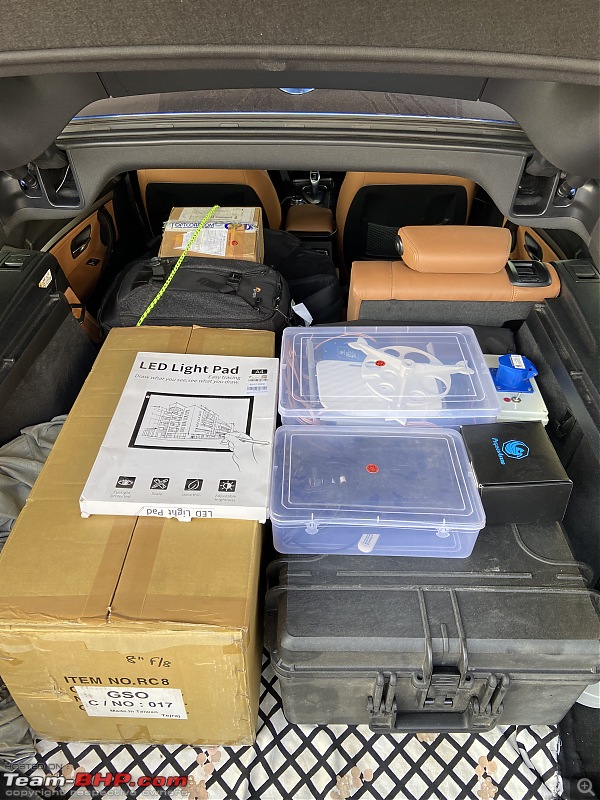 We had the whole place to just 3 of us. 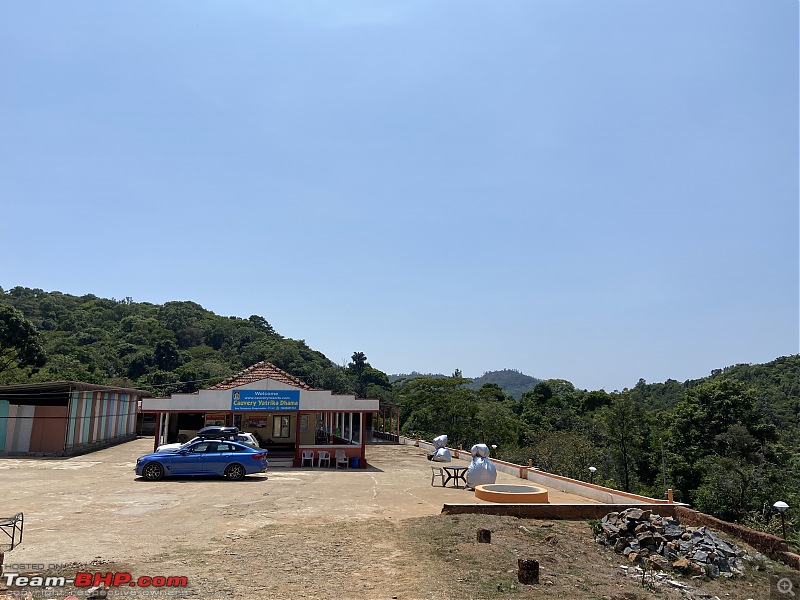 The equipment and the car early morning.  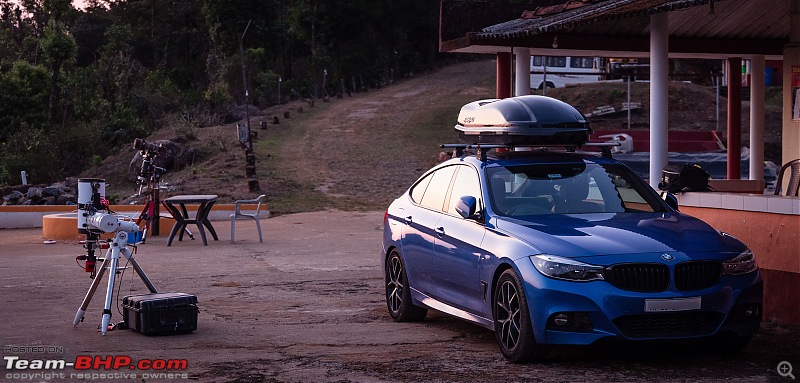 A panorama of the full arm of Milky way. This is made by stiching 10 individual pictures spanning the full length of Milky way.  The equipment and Milkyway. In this picture, the telescope is pointed at the Trifid nebula which is part of the Milkyway. 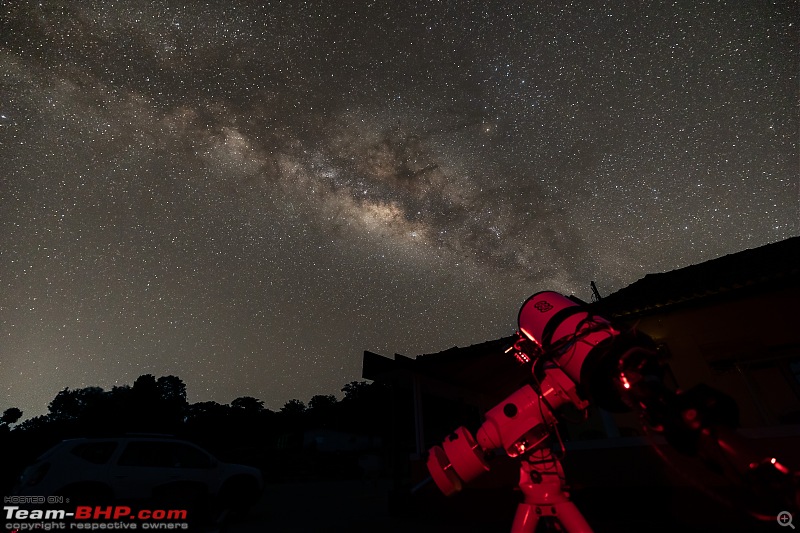 Caught a meteor in one of the frames of the timelapse. 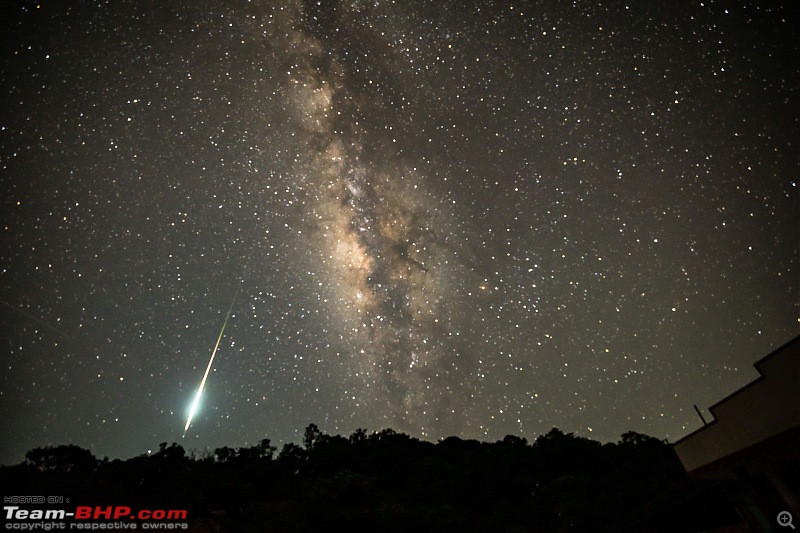 It has been a long time dream to get a picture of my car with Milky Way. Got that wish fulfilled.  Sombrero Galaxy - M104 / NGC4594  The Sombrero Galaxy, also known as Messier 104, M104 or NGC 4594, is located 28 million light years away in the constellation of Virgo. It has a diameter of about 49000 light years, almost half the diameter of Milky Way. From our viewpoint on Earth, we can see the thin edge of its flat disk and a central bulge of stars, making it resemble a wide-brimmed hat, hence the name Sombrero Galaxy. Astronomers initially thought the halo was small and light, indicative of a spiral galaxy; but the Spitzer Space Telescope found that the dust ring was larger and more massive than previously thought, indicative of a giant elliptical galaxy. While some galaxies are rotund and others are slender disks like our spiral Milky Way, new observations from NASA's Spitzer Space Telescope show that the Sombrero galaxy is both. The galaxy, which is a round elliptical galaxy with a thin disk embedded inside, is one of the first known to exhibit characteristics of the two different types. Astronomers do not know whether the Sombrero's disk is shaped like a ring or a spiral, but agree it belongs to the disk class. Information source: Wikipedia and sciencedaily.com Date: 23rd April 2023 Location: Talacauvery, Coorg, KA, India Exposure Details: Total integration - 4 hours 42 minutes L - 2 hours 18 minutes (46 * 180 seconds) R - 48 minutes (16 * 180 seconds) G - 48 minutes (16 * 180 seconds) B - 48 minutes (16 * 180 seconds) Darks - 25 Flats - 25 for each channel, shot each day Dark flats - 25 each for corresponding flats, shot each day Trifid Nebula - M20/NGC6514  The Trifid Nebula also known as Messier 20 or NGC 6514 is an H II region in the north-west of Sagittarius in a star-forming region in the Milky Way's Scutum-Centaurus Arm. It is located 9000 light years from earth and is 21 light years wide. It was discovered by Charles Messier on June 5, 1764. Its name means 'three-lobes'. The object is a combination of an open cluster of stars, an emission nebula (the relatively dense, reddish-pink portion), a reflection nebula (the blue portion), and a dark nebula (the apparent 'gaps' in the emission nebula that cause the trifurcated appearance, also designated Barnard 85). In the image, a group of recently born massive bright stars can be seen. These stars are releasing a flood of ultraviolet radiation that dramatically influences the structure and evolution of the surrounding nebula. Star formation is no longer occurring in the immediate vicinity of this group of bright stars because their intense radiation has blown away the gas and dust from which new stars are made. Information gathered from: Wikipedia and nasa.gov Date: 22nd and 23rd April 2023 Location: Talacauvery, Coorg, KA, India Exposure Details: Total integration - 4 hours L - 2 hours 9 minutes (43 * 180 seconds) R - 39 minutes (13 * 180 seconds) G - 33 minutes (11 * 180 seconds) B - 39 minutes (13 * 180 seconds) Darks - 25 Flats - 25 for each channel, shot each day Dark flats - 25 each for corresponding flats, shot each day A couple of Milkyway timelapses from Coorg. Notice the meteor strike and the subsequent atmosperic disturbances at around 00:17 timeline. That's all folks I have for now. There will be hardly any opportunity for astrophotography in the next few months. The next opportunity will be in October in Hanle and then as the season starts in December. I am planning to do a couple of upgrades to the equipment. 1. Install a power distribution box to make the wiring more streamlined 2. Install an electronic field rotator to accurately adjust the angle of the camera to frame deep space objects. Will update the thread when I complete these upgrades. Last edited by libranof1987 : 3rd May 2023 at 08:03. Reason: As requested |
| |  (50)
Thanks (50)
Thanks
 |
| The following 50 BHPians Thank graaja for this useful post: | abirnale, Acharya, ajay0612, akshay81, ampere, anivy, ashpalio, Avikbrio, ayankm, Batfreak, Bhokal, BoneCollector, catchjyoti, chanz2015, Chetan_Rao, CosmicWizard, DiMaGo, Dr.AD, GTO, highlander, IcarusMan, kap04, KarthikK, kat, Kickdown, libranof1987, maddyg, mallumowgli, MT_Hyderabad, mugen_pinaki27, NewUser123, premsky, RaceCyborg, rajesh1868, robimahanta, Samfromindia, sanjayrozario, Scarlet_Rider, slamnos, SnS_12, TejasV, texens, TheReebee, tracerspiff, UD17, vignesh207, virajmore03, xja1, yesyeswe, ysjoy |
 |


